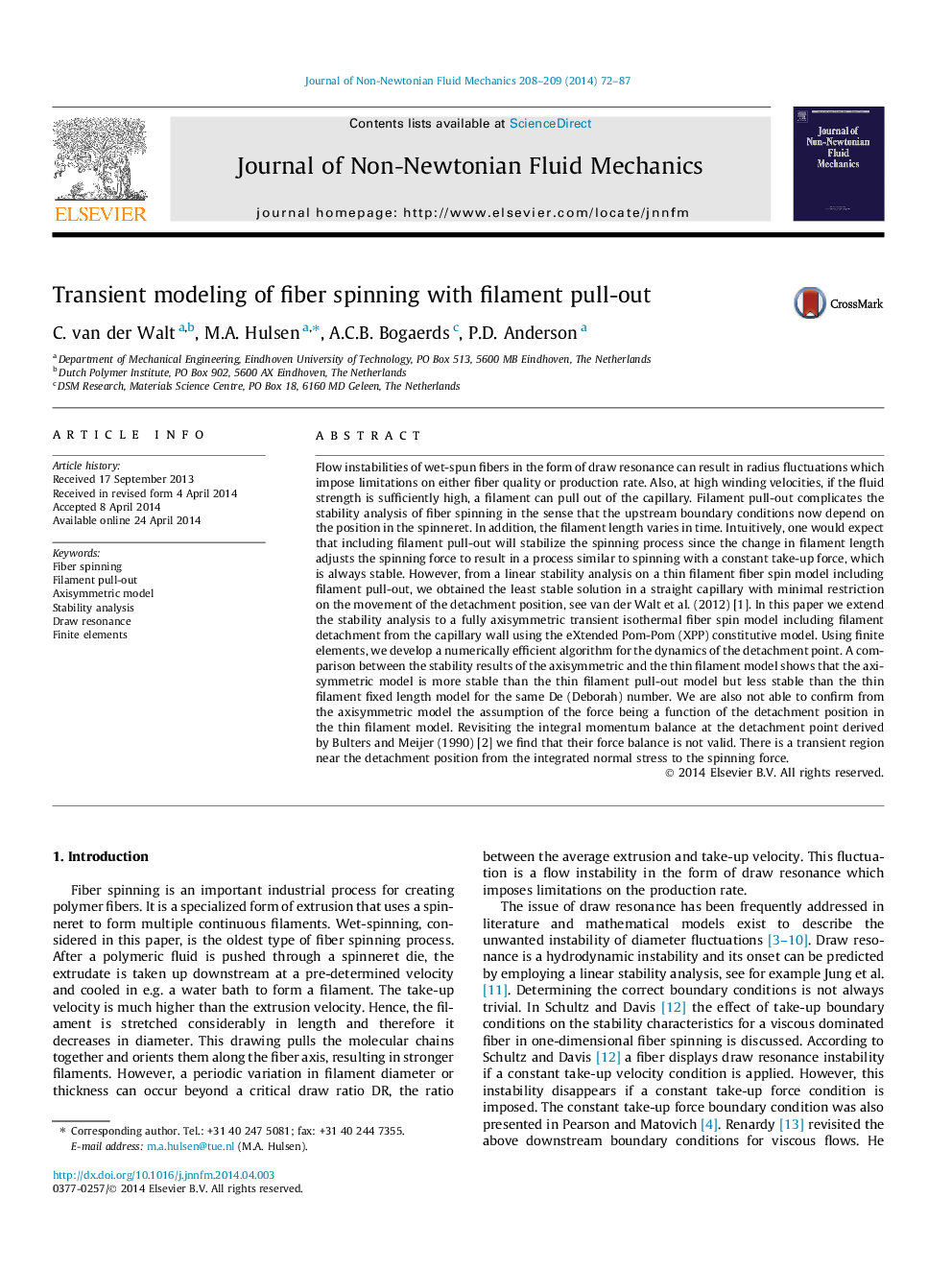| Article ID | Journal | Published Year | Pages | File Type |
|---|---|---|---|---|
| 670613 | Journal of Non-Newtonian Fluid Mechanics | 2014 | 16 Pages |
Abstract
Flow instabilities of wet-spun fibers in the form of draw resonance can result in radius fluctuations which impose limitations on either fiber quality or production rate. Also, at high winding velocities, if the fluid strength is sufficiently high, a filament can pull out of the capillary. Filament pull-out complicates the stability analysis of fiber spinning in the sense that the upstream boundary conditions now depend on the position in the spinneret. In addition, the filament length varies in time. Intuitively, one would expect that including filament pull-out will stabilize the spinning process since the change in filament length adjusts the spinning force to result in a process similar to spinning with a constant take-up force, which is always stable. However, from a linear stability analysis on a thin filament fiber spin model including filament pull-out, we obtained the least stable solution in a straight capillary with minimal restriction on the movement of the detachment position, see van der Walt et al. (2012) [1]. In this paper we extend the stability analysis to a fully axisymmetric transient isothermal fiber spin model including filament detachment from the capillary wall using the eXtended Pom-Pom (XPP) constitutive model. Using finite elements, we develop a numerically efficient algorithm for the dynamics of the detachment point. A comparison between the stability results of the axisymmetric and the thin filament model shows that the axisymmetric model is more stable than the thin filament pull-out model but less stable than the thin filament fixed length model for the same De (Deborah) number. We are also not able to confirm from the axisymmetric model the assumption of the force being a function of the detachment position in the thin filament model. Revisiting the integral momentum balance at the detachment point derived by Bulters and Meijer (1990) [2] we find that their force balance is not valid. There is a transient region near the detachment position from the integrated normal stress to the spinning force.
Related Topics
Physical Sciences and Engineering
Chemical Engineering
Fluid Flow and Transfer Processes
Authors
C. van der Walt, M.A. Hulsen, A.C.B. Bogaerds, P.D. Anderson,
